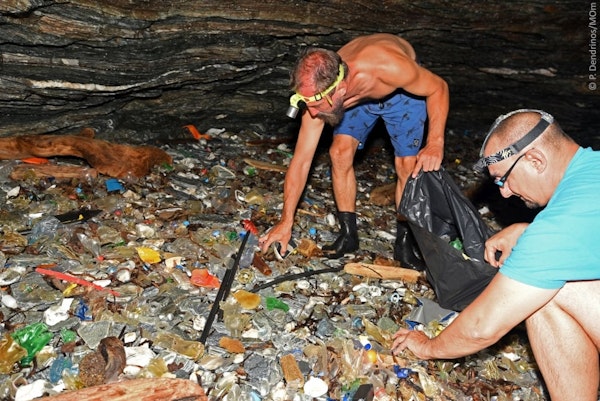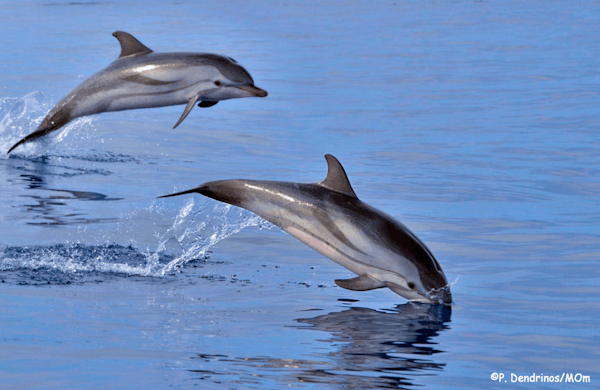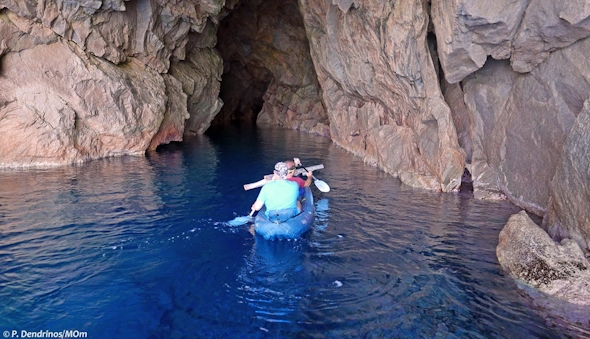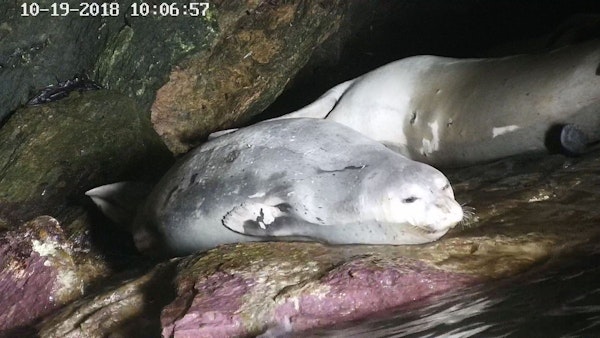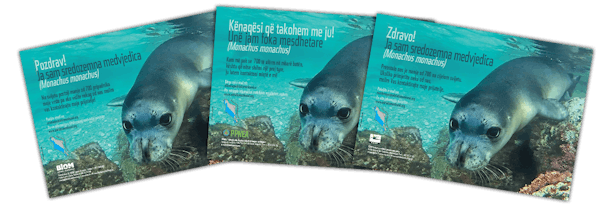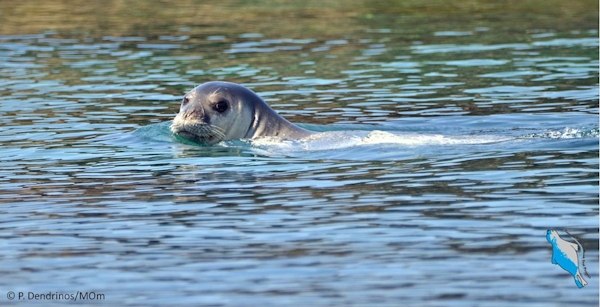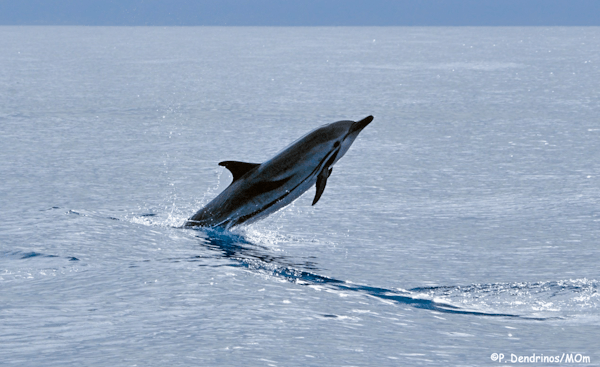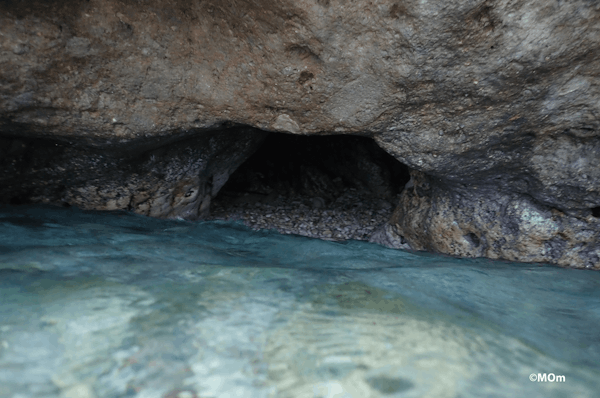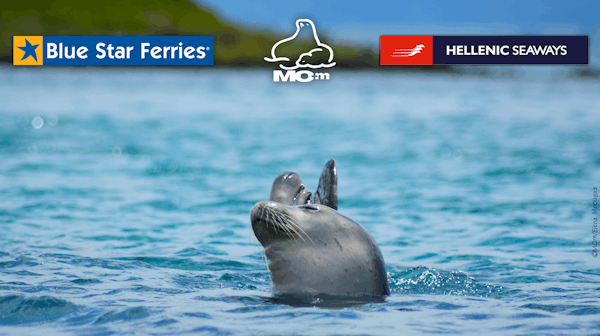If this newsletter doesn't appear correctly, please click here |
|
|
As the rough 2020 has passed, it is time to look back to our actions, which, despite all the difficulties, were a lot. One of the most important actions is the one that we have been doing with you all these years, and that is the reports that citizens from all over Greece have been sending us regarding seals that they saw and admired. Technology has been an imporant asset to this valuable collaboration, helping us receive pictures and videos that contain important information in real time. Therefore, for 2020, you sent us 321 reports for monk seal sightings in Greece. It is worth noting that, from all your information and data collected by MOm's biologists, this past year a record-breaking 70 births were recorded (more than any other year). Also, 10 new breeding sites were recorded, while 3 "seal caves" were reused for reproduction after 30 years!
We would like to thank all of you for the protection of one of the rarest mammals of our planet!
Don't forget, if you see a seal, visit https://www.mom.gr/i-saw-a-seal |
|
|
MOm's Field Team visited Northern Cyclades, where it visited marine caves of Andros, Tinos and Gyaros, and also the neighboring islet of Mandilou in Evia. Along the LIFE Andros Park Project and with the cooperation of the Municipality of Andros, the researchers not only collected nets, buoys, woods and plastics from the caves, but they also installed automatic digital cameras to record the use of the shelters by seals during the reproductive season. Although Covid-19 did not allow us to collect the data from all cameras, we managed to confirm the birth of at least 12 mediterranean monk seal pups in the project's area. For more information on the project's actions, please click here |
|
|
For yet another year, MOm, with the full support of the Thalassa Foundation and the cooperation of Port Authorities and the Management Body, contributed to the effective guarding and protection of the National Marine Park of Alonissos Northern Sporades. This year, apart from the usual marine patrols, a light aircraft aerial surveillance was also tested. The first test patrols showed that the use of light or superlight aircraft in extensive protected areas can immensely contribute not only to their guarding, but to the recording of marine mammals, the prompt locating of pollution or forest fires etc. A total of 1300 hours of patrols took place, during which 7000 nautical miles were covered and 11 cases of illegal fishing were dealt with. At the same time, MOm continued the scientific recording of marine mammals in the Northern Sporades, an area of extreme importance both to the mediterranean monk seal and cetaceans! |
|
|
The Northern Aegean Dolphin Project continued its operation in the summer of 2020, albeit with some limitations owing to the ongoing Covid-19 pandemic. Undeniably our marine mammal friends inhabiting the National Marine Park of Alonissos, Northern Sporades were as charming as ever. We were lucky to observe large mixed-species groups of both Common dolphins (Delphinus delphis) and Bottlenose dolphins (Tursiops truncatus) exhibiting highly energetic socializing behavior and impressive leaps, allowing our researchers to collect valuable data on this enigmatic phenomenon while also being treated to some breathtaking moments. Some highlights of our expeditions include dolphins enthusiastically approaching our research vessel and bow-riding and a shy female monk seal checking us out from afar. We would like to thank all our participants for the wonderful times we had together and Anatolia College for a great continued cooperation in 2020 despite the situation. |
|
|
While on the quest for new important Mediterranean monk seal breeding sites, MOm’s Research Team completed the detailed recording and evaluation of new breeding sites in the Aegean Sea. Seven new areas from Crete to Pelion have been evaluated as important breeding sites. The infrared cameras placed to determine to which degree and how many animals are using these sites, confirmed their importance for the species. This specific action that focuses on the expansion of the infrared camera network in the southern Aegean is funded by the IUCN Centre for Mediterranean Cooperation and the financial support of the MAVA Foundation, and aids to the completion of the national mapping project that has been taking place the past few years with the support of the Thalassa Foundation. MOm’s biologists are hoping that we will soon have a complete overview of the important pupping sites throughout Greece, a first in the history of the species’ conservation history. |
|
|
The year 2020 marks the successful completion of the project “Eastern Adriatic Monk seal Project” that was carried out by MOm from 2018 – 2020, in cooperation with the organizations Euronatur (Germany), Biom (Croatia), CZIP (Montenegro) and PPNEA (Albania). The aim of the project was to prepare the ground for the return of the Mediterranean monk seal to the eastern part of the Adriatic Sea. As in most areas of the Mediterranean, Mediterranean monk seals were part of the local fauna, but disappeared some time during the 1970ies. Despite driven to extinction the species remained deeply engraved in the conscience of the local people. The activities of the project included awareness and sensitization activities, as well as activities to evaluate the suitability of the habitat for the return of the species. More specifically, researchers from the three partner organizations visited a large part of the coastline stretching from southern Albania to southern Croatia in search of marine caves that could be potentially suitable for the Mediterranean monk seal. Furthermore, based on the information material used by MOm in the awareness campaigns in Greece, leaflets were prepared and widely distributed in Croatia, Montenegro and Albania. Also, a dedicated website highlighting the main results of the project was prepared (https://adriaticmonkseal.org/). Apart from the coordinating role, MOm participated in the project by monitoring the Northern Ionian monk seal population. Monitoring efforts were carried out at the islands of Othonoi, Corfu, Paxoi, Andipaxoi and mainland Greece, and confirmed the importance of the area as a stepping stone for the re-colonization of the Adriatic Sea by the Mediterranean monk seal. One of the highlights of the project was the increased number of monk seal sightings in Albania and the recording, for the first time, of a newborn pup in the region! |
|
|
Cyclades Care for Dolphins, implemented by MOm with the support of the Cyclades Preservation Fund, is a unique attempt to increase our knowledge on endangered and vulnerable cetacean populations inhabiting the Cyclades which is currently lacking and inadequate to support proposals for place-based conservation measures. It constitutes the first attempt to systematically record and characterize cetacean populations in the area. This would be achieved by a two-pronged approach of a citizen-science-based data collection regime coupled with cost-effective aerial surveys in the region. The involvement of locals in the citizen-science data collection was achieved through the distribution of material (Cetacean Sighting Data Recording Form, Informational Material) to key stakeholders and direct interviews with marine professionals. These efforts were hindered by the emergence of the Covid-19 pandemic which significantly decreased our ability to conduct interviews and other in situ activities relating to the promotion of the project to local stakeholders. However efforts were continued to the greatest possible extent via online communication. During 2020 our activities resulted in 112 reports of cetacean sightings in the Cyclades accompanied by evidence (video/photo) to correctly identify the species, a rough date and a location. This constitutes the largest dataset for the region to date. The implementation of aerial surveys and the re-instatement of in situ promotional activities are expected to occur in 2021 once the pandemic situation subsides. |
|
|
By the end of 2020 the research for sea shelters of Mediterranean Monk seals in Crete, has been completed. The mapping project of the coastline of Crete started June 2019 and has been possible with the support of Thalassa Foundation. During the mapping Mom’s researchers covered 1.372 km of coastline making the circumnavigation of the island as well as all of its islets. Crete constitutes the southern part of Greece and the research for capable for monk seal, pupping shelters intends to complete our knowledge about the reproductive dynamic of the area but also help to obtain a clearer picture of the population of Mediterranean monk seals in the country. To prepare for each mission, the field research team consulted MOm's National Rescue and Information Network (RINT) to find out where seal sightings have been concentrated in recent years. During the process of analysis of the results, 13 sea caves were identified as significantly important for the reproductive activity of Crete, while in some of them the presence of seals was recorded. Cameras were placed inside some shelters which were recovered towards the end of the year revealing very interesting and promising findings. |
|
|
 |
The Mediterranean monk seal (Monachus monachus) is a flagship species for marine conservation, but important aspects of its life history remain unknown. Concerns over imminent extinction motivated a nuclear DNA study of the species in its largest continuous subpopulation in the eastern Mediterranean Sea. Despite recent evidence of partial subpopulation recovery, we demonstrate that there is no reason for complacency, as the species still shares several traits that are characteristic of a critically endangered species: Mediterranean monk seals in the eastern Mediterranean survive in three isolated and genetically depauperate population clusters, with small effective population sizes and high levels of inbreeding. Our results indicated male philopatry over short distances, which is unexpected for a polygynous mammal. Such a pattern may be explained by the species’ unique breeding behavior, in which males defend aquatic territories near breeding sites, while females are often forced to search for new pupping areas. Immediate action is necessary to reverse the downward spiral of population decline, inbreeding accumulation and loss of genetic diversity. We propose concrete conservation measures for the Mediterranean monk seal focusing on reducing anthropogenic threats, increasing the population size and genetic diversity, and thus improving the long-term prospects of survival. You can read the study here Genetic and demographic history define a conservation strategy for earth’s most endangered pinniped, the Mediterranean monk seal Monachus monachus
Alexandros A. Karamanlidis, Tomaž Skrbinšek, George Amato, Panagiotis Dendrinos,
Stephen Gaughran, Panagiotis Kasapidis, Alexander Kopatz & Astrid Vik Stronen |
|
|
For yet another year, Hellenic Seaways and Blue Star Ferries are actively participating in MOm's actions, helping our researchers, our Rescue Team and their equipment to travel to any island in Greece they need to. Especially in cases of emergency when there is no time or ability to use our own means, they are always there for us to provide safe and quick passage for us and the pups! We thank them a lot! |
|
|
Η νέα συλλογή της MOm για το 2021 περιλαμβάνει πολλά νέα σχέδια και ιδέες ιδανικές για δώρα στους αγαπημένους σας! Ειδικά αυτή τη δύσκολη περίοδο που διανύουμε λόγω της πανδημίας, η στήριξή σας είναι πιο σημαντική από ποτέ! Ενισχύστε το έργο μας και βοηθήστε μας να εξασφαλίσουμε τη διατήρηση του πιο σπάνιου θηλαστικού στην Ευρώπη! |
|
|
MΟm / Hellenic Society for the Study & Protection of the Monk Seal
18 Solomou Str., Athens, Greece 10682
Τel.: +30210-5222888, Fax: +30210-5222450
e-mail: support@mom.gr |
|
|
This email cannot be considered spam as long as the information of the sender and the unsubscribe procedure are clearly stated. If you are a part of this list by mistake or for any other reason you wish to unsubscribe please click the link above. This message is fully in compliance with European legislature regarding promotional messages. |
|
|
| |




